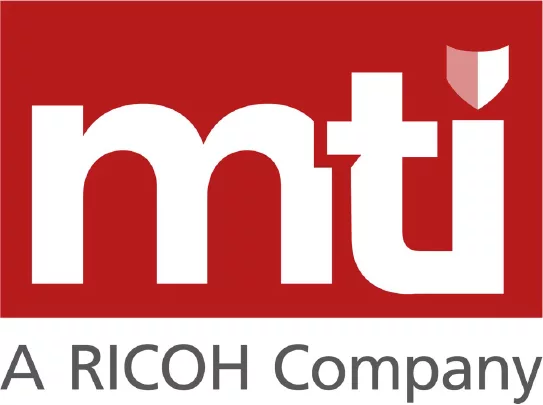This article was originally posted by VMware on their website by the NSX Team.
By now, you’ve probably heard about why you should automate network management. Not only does automation save time and effort, but it also reduces risk. As Gartner notes, for instance, organisations that automate about 70 percent of their network change management operations will see a 50 percent reduction in outages. They’ll also cut in half the time it takes to roll out new services.
The bigger question many teams face surrounding network automation, however, is how to automate. With so many tools on the market that promise to help automate networking and security, which solution is the best fit for your needs? What should you look for from an automation lens when considering a networking platform?
To provide clarity on those questions, we’ve put together a list of the reasons why customers choose VMware NSX in order to deploy applications at scale with greater speed, efficiency, and security. VMware NSX, the platform for network virtualisation, provides instant and programmatic provisioning for fast, highly available, and secure infrastructure. The automation capabilities of NSX listed below maximise time savings and minimise risk when managing distributed, multi-cloud environments.
1. API-first approach
The “old” way of network management involved configuring each layer of your network – switches, routers, load balancers and so on – separately in order to achieve a desired state. That strategy takes time, while also leaving you prone to oversights.
That’s why NSX uses a different approach. It is built with an API-first approach, followed by the GUI. With the NSX Declarative Policy model, you can issue a single API command to configure a complete logical topology. There’s no need to log into each device or juggle multiple configuration languages. With NSX, you can do it all through a centralised set of REST APIs and SDKs (Python, Java).
2. Manage network infrastructure as code
With NSX, every facet of your network infrastructure can be defined and managed using code. Instead of having to log into different tools and navigate inconsistent interfaces to configure the network, you can spell out your requirements using code, then deploy them across your environment.
If you want to create complex network topologies or security policies, for example, you can do it consistently using code. You can also manage your network configurations as code inside a version control system of your choice, and you can easily integrate code-based configuration policies into CI/CD operations.
3. Leverage multiple automation tools through one platform
In addition to providing a variety of built-in automations, NSX makes it easy to leverage external automation tools of your choosing. Those include not just other VMware solutions, like vRealize Automation and PowerCLI, but also third-party tools like Terraform and Ansible.
NSX’s native integrations with a wide variety of solutions give you the flexibility to deploy NSX seamlessly no matter what’s in your toolbox – or which new tools you may choose to use in the future.
4. Hierarchical APIs mean easy-to-use APIs
NSX doubles down on the value of an API-first approach to network management through its hierarchical API structure, which allows admins to operationalise multiple interactions through a single API call.
If, for instance, you want to delete one resource and deploy a new one, you don’t need to make separate API calls to do so. You can simplify your workflows by consolidating multiple operations into one API call.
5. APIs based on the OpenAPI standard
NSX APIs are based on the OpenAPI standard – a de facto Rest API standard that is widely used by organisations around the world.
This means your team doesn’t need to learn to work with unusual schema. So long as your engineers and admins are familiar with OpenAPI, they’ll understand NSX’s API structures. Nor do you have to worry about compatibility issues with third-party software. Any tools that support OpenAPI can integrate with NSX.
6. An active community and ecosystem
When you use NSX, you’re never on your own. Beyond the various support services and resources provided by VMware directly, NSX benefits from a thriving user ecosystem.
NSX users can participate in VMware forums like the VMware Communities, for example. They can also find free sample code and fully automated use cases on GitHub to help get started with NSX or practice implementing new configurations.
7. A wide variety of users and use cases
NSX isn’t designed for just one set of users or one set of needs. It caters to a wide array of users, use cases, and tool sets.
Virtual infrastructure admins can use NSX in conjunction with tools like PowerCLI to automate complex workflows. DevOps and DevSecOps teams can benefit from NSX’s integration with platforms such as Ansible and Terraform. Cloud admins can leverage NSX as part of automation stacks, including vRealize Automation and vRealize Operations.
8. A wide range of authentication mechanisms
When it comes to authentication, too, NSX gives you maximum flexibility. It supports basic authentication based on local usernames and passwords. It also supports certificate-based authentication for added security. And it can fully integrate with LDAP or Active Directory to simplify authentication within larger organisations.
In short, no matter how many users you have or how you manage access credentials, NSX can work with your stack, making the lives of network engineers that much easier.
9. Operational efficiency
NSX is built to be efficient first and foremost. Features like API-first network management, flexible integrations with external automation tools, and code-based configuration minimise manual, repetitive work.
By extension, NSX helps IT staff to focus on strategic initiatives that create new value and drive innovation – instead of spending their days drowning in confusing configuration tooling or putting out fires.
10. Risk mitigation
When you maximise automation – as NSX does – you minimise risk. Automation reduces your chances of configuration mistakes caused by human error or oversight. It increases efficiency and ensures consistency across your configurations and operational workflows.
All of the above adds up to lower risks of equipment failure, security breaches, compliance violations, and other problems that harm the business.
Conclusion
Network automation works best when it maximises flexibility and simplicity while minimising the need for manual workflows. Through the API-first approach, wide-ranging integrations, and standards-based tooling, NSX helps network/security admins take infrastructure automation to the next level, making it not just possible but also easy and efficient.
Click here to download the infographic on the ‘Top 10 Reasons Why Customers Choose VMware NSX to Automate Networking and Security.’
You can read the original post by the NSX Team here.
Ready to explore how NSX can transform your organisation? Contact MTI today to learn more about our VMware NSX services and how we can help you harness the full potential of software-defined networking and security.

